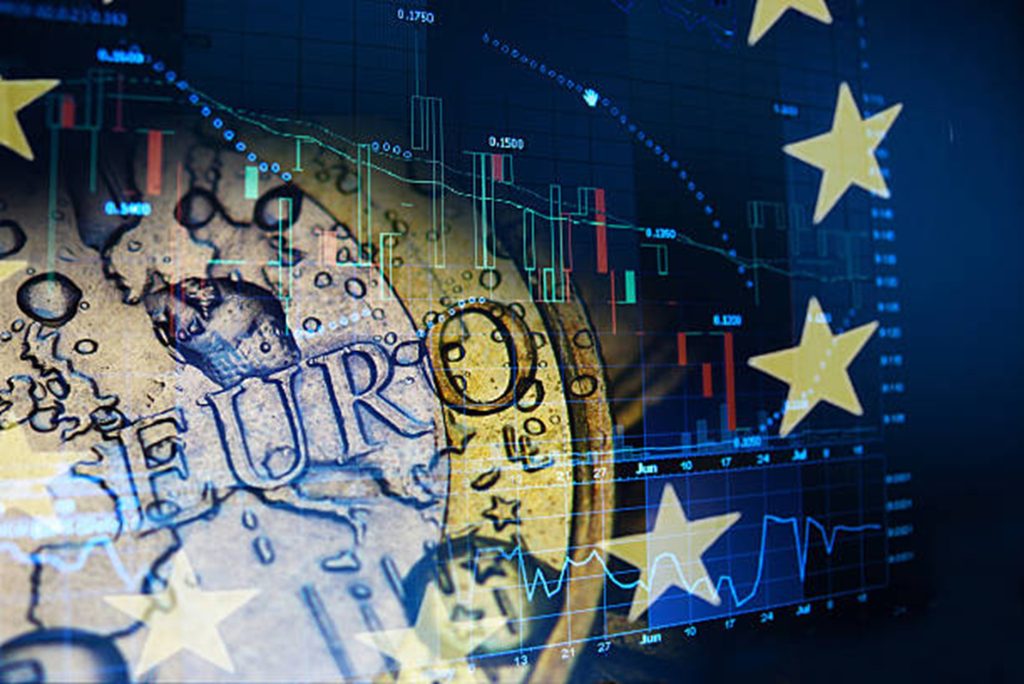Introduction
The European Central Bank (ECB) plays a critical role in shaping Europe’s monetary policy and influencing global financial markets. As the central institution responsible for managing the euro and regulating financial conditions across the Eurozone, the ECB’s policy decisions significantly impact the broader financial ecosystem, not only in Europe but also globally. The ECB’s actions—including interest rate changes, quantitative easing programs, and other monetary measures—affect everything from bond yields to stock prices and foreign exchange markets.
Given the ECB’s role in responding to evolving economic conditions, its policy adjustments often come with both immediate and long-term consequences for financial markets. These changes are crucial for investors, institutions, and policymakers as they navigate the region’s economic challenges and global financial shifts. This article examines the long-term effects of ECB policy adjustments on financial markets, focusing on interest rates, quantitative easing, inflation targeting, and the broader economic landscape.
Section 1: ECB’s Monetary Policy and Its Tools
The ECB’s primary goal is to maintain price stability in the Eurozone, with an inflation target of just below 2%. To achieve this goal, the ECB uses a variety of tools, including setting interest rates, managing liquidity in the financial system, and implementing quantitative easing (QE) programs.
1.1 Interest Rates and Their Role in Monetary Policy
Interest rates are perhaps the most visible and direct tool the ECB has at its disposal. The central bank sets benchmark rates that influence the cost of borrowing for banks, businesses, and consumers. These rates, in turn, impact the broader economy by either stimulating or slowing down spending and investment.
- Low Interest Rates: In times of economic downturn or low inflation, the ECB may lower interest rates to stimulate borrowing and spending. However, if the ECB keeps rates too low for an extended period, this can lead to asset bubbles, excessive risk-taking, and long-term distortions in financial markets.
- Rising Interest Rates: On the other hand, when inflation is rising, the ECB may decide to increase interest rates to control price pressures. While higher rates can help reduce inflation, they also increase borrowing costs, potentially stifling investment and consumption, and leading to a slowdown in economic activity.
1.2 Quantitative Easing (QE) and Liquidity Management
In addition to adjusting interest rates, the ECB has also used quantitative easing (QE) as an unconventional tool to inject liquidity into the financial system. QE involves the ECB purchasing government bonds and other financial assets to lower long-term interest rates and encourage lending.
- Stimulating Demand: The ECB’s QE programs are designed to boost investment by lowering borrowing costs across the economy. By flooding the financial system with liquidity, the ECB aims to stimulate demand for goods and services, helping to raise inflation to target levels.
- Asset Prices and Market Liquidity: While QE has supported asset prices, including stocks and bonds, the long-term impact is complex. Continued asset purchases by the ECB can create market distortions, such as inflated asset prices and reduced market liquidity, especially when the ECB eventually unwinds its bond purchases.
1.3 Forward Guidance and Market Expectations
The ECB also uses forward guidance to shape market expectations about future policy actions. This involves signaling its intentions regarding interest rates and other monetary measures, helping markets anticipate changes in the economic landscape. Forward guidance has become a more prominent tool in the ECB’s policy arsenal as it works to guide expectations during periods of uncertainty.
- Influencing Investor Behavior: Forward guidance can affect investor behavior by signaling the ECB’s policy stance and its response to economic conditions. By providing clearer expectations, forward guidance helps reduce market volatility and gives investors more certainty in their decision-making.
Section 2: Long-Term Effects of ECB Policy Adjustments on Financial Markets
The ECB’s policy decisions have long-term effects on financial markets. While the immediate market reactions are often driven by changes in interest rates or announcements of new measures, the cumulative impact of these policies can create lasting shifts in investment behavior, asset valuations, and global capital flows.
2.1 Impact on Eurozone Bond Markets
One of the most direct effects of ECB policy adjustments is on the bond markets, particularly sovereign bonds within the Eurozone.
- Bond Yields and Pricing: When the ECB cuts interest rates or engages in QE, the yields on government bonds tend to fall, as investors seek higher returns in a low-rate environment. This can create a long-term downward pressure on bond yields across the Eurozone. The ECB’s bond purchases can also distort the pricing of sovereign debt, making it harder for investors to assess the true risk of a given bond.
- Credit Risk and Investor Sentiment: Over the long term, low interest rates and QE policies may lead to a “reach for yield” behavior, where investors take on more risk in pursuit of higher returns. This can result in the mispricing of risk and increased exposure to potential defaults. Additionally, the ECB’s policies may affect investor sentiment, especially if the market begins to perceive that the ECB is unable to control inflation or stabilize economic growth.

2.2 Impact on European Equity Markets
Equity markets in the Eurozone are also influenced by ECB policy changes, though the relationship is more indirect. When the ECB cuts interest rates or injects liquidity into the system, equity prices often rise in the short term due to lower borrowing costs and increased liquidity.
- Corporate Profits and Investment: Over the long term, the availability of cheap credit can encourage corporate investment and expansion. Companies may take on more debt to finance growth or use the additional liquidity to repurchase shares, which can further push up stock prices. However, the sustained reliance on easy monetary policy could result in imbalances, such as overleveraged companies and unsustainable growth patterns, leading to market corrections when rates eventually rise.
- Investor Behavior and Market Sentiment: Extended periods of low interest rates can drive investors to seek higher returns in riskier assets, such as stocks, real estate, and high-yield bonds. This behavior can inflate asset bubbles in certain sectors. Additionally, if the ECB tightens monetary policy in the future to combat inflation, this could lead to a sharp reversal in stock prices as investors adjust to the higher cost of borrowing and slower economic growth.
2.3 Foreign Exchange Markets and the Euro
The ECB’s monetary policies also impact the value of the euro, which in turn affects global capital flows and trade balances. When the ECB implements policies like interest rate cuts or QE, the euro tends to depreciate relative to other currencies, particularly the U.S. dollar.
- Currency Depreciation and Trade: A weaker euro can make European exports more competitive on the global market, boosting demand for European goods and services. However, it can also increase the cost of imported goods, contributing to inflationary pressures. A weaker currency may also impact global investors’ returns on investments in Europe, as they may see their gains eroded by currency depreciation.
- Capital Flows: Over the long term, the value of the euro can affect capital flows into the Eurozone. A weaker euro may encourage foreign investment in European assets due to the lower cost of entry, but it can also discourage investments if investors fear continued currency depreciation. Conversely, a strong euro, often resulting from tight monetary policy or higher interest rates, may attract capital flows into Europe but could dampen export growth and affect corporate profits.
2.4 Long-Term Impact on Global Capital Flows
The ECB’s monetary policy adjustments have a broader impact on global capital flows, particularly as they interact with policies in other major economies such as the United States and China.
- Global Investment Allocation: ECB policy changes, particularly interest rate adjustments, can influence how global investors allocate their capital across regions. For instance, when ECB rates are lower than those of the U.S. Federal Reserve, capital may flow out of the Eurozone in search of higher returns in U.S. assets. Similarly, when the ECB engages in QE, global investors may reallocate capital to Eurozone equities or bonds if they perceive these assets to be undervalued due to central bank intervention.
- Emerging Markets: European monetary policy can also have spillover effects on emerging markets. As the ECB adjusts its rates, the relative attractiveness of European assets versus those in emerging markets can shift, prompting changes in capital flows. Additionally, if the ECB’s actions lead to volatility in the euro or inflationary pressures, emerging markets that are closely tied to European trade or investment may experience either capital inflows or outflows depending on the perceived risks.
Section 3: Conclusion
The ECB’s policy adjustments have long-term and far-reaching effects on financial markets, particularly in the Eurozone and beyond. These policies directly influence bond yields, equity markets, and the value of the euro, while also shaping global capital flows and investor sentiment. While the immediate effects of ECB policy decisions can be observed in short-term market fluctuations, the long-term impacts tend to shape broader investment strategies, asset valuations, and global economic dynamics.
For investors, understanding the implications of the ECB’s policy adjustments is critical to navigating financial markets effectively. As the ECB continues to adjust its policies in response to changing economic conditions, it will remain an essential factor influencing not only European markets but also global capital flows and financial market stability. The evolving monetary policy environment in Europe will require ongoing attention and analysis to manage risks and capitalize on emerging opportunities.





























